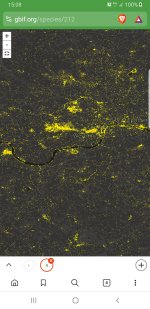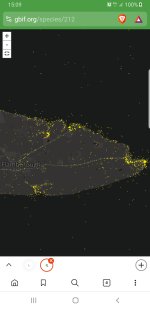
For those who (like me) didn't use to know that the Global Biodiversity Information Facility (GBIF) has its own range maps combining all available recording schemes, and very detailed ones, too (of course, some stray records of what may look like vagrants will be mistaken because the info is sucked directly from other databases).
 www.gbif.org
www.gbif.org
 www.gbif.org
www.gbif.org
EDIT: Who would've thought Bulgaria and Estonia are so well watched?
EDIT 2:
For the whole world:
 www.gbif.org
Interesting that out of a total of 228K pictures, 185.5K are from Macaulay Library (there are species for which, strangely, ML has three times more photos than the GBIF--that's probably because only iNaturalist and some smallish schemes supply photos to the database (?)).
www.gbif.org
Interesting that out of a total of 228K pictures, 185.5K are from Macaulay Library (there are species for which, strangely, ML has three times more photos than the GBIF--that's probably because only iNaturalist and some smallish schemes supply photos to the database (?)).
Anyway, no matter where you report your data, they are not lost.
Luscinia megarhynchos C.L.Brehm, 1831
Global Biodiversity Information Facility. Free and Open Access to Biodiversity Data.
Luscinia luscinia (Linnaeus, 1758)
Global Biodiversity Information Facility. Free and Open Access to Biodiversity Data.
EDIT: Who would've thought Bulgaria and Estonia are so well watched?
EDIT 2:
For the whole world:
Passer domesticus (Linnaeus, 1758)
Global Biodiversity Information Facility. Free and Open Access to Biodiversity Data.
Anyway, no matter where you report your data, they are not lost.
Last edited:








